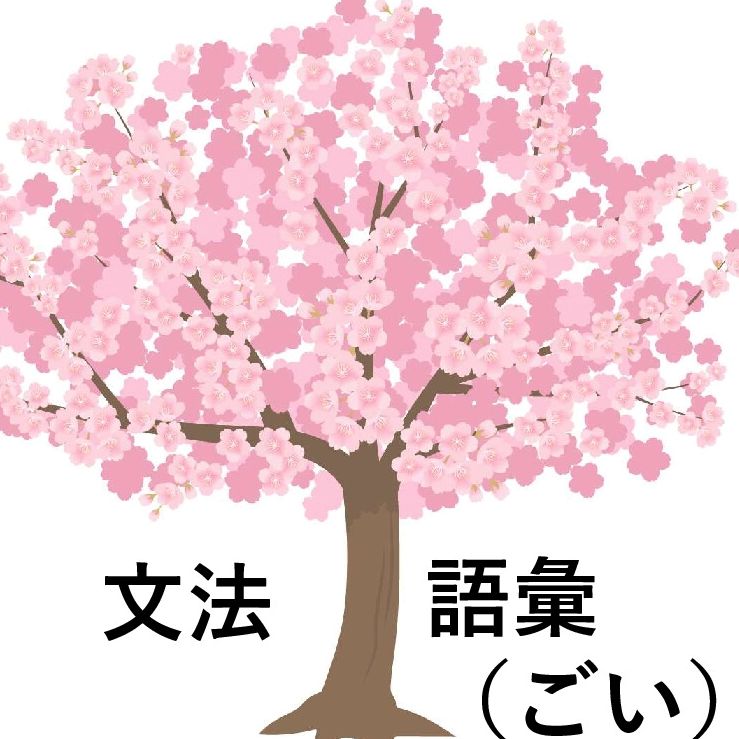
【意味】自動詞と他動詞(meanings between transitive and intransitive)
설명
こんにちは。
今日は自動詞と他動詞の意味の区別について説明します。
Today I will discuss the distinction between the meanings of transitive and intransitive verbs.
ルール1
(自動詞は「を」がつかない)
例:ドアが閉まる。
例:パソコンがつく。
(他動詞は「を」がつく)
例:ドアを閉める。
例:パソコンをつける。
他動詞は結果、自動詞は原因です。
➀ドアを閉める。(原因) ドアが閉まる。(結果)
「私がドアを閉める」
→ドアが閉まる。
②パソコンをつける。(原因)パソコンがつく。(結果)
「私がパソコンをつける」
→パソコンがつく。
例外が2つあります。
「を」がつく自動詞があります。Intransitive verbs with 「を」(exception)
1.
例1)空港を出発する。
例2)家を出る。
※「を」の意味は起点です。起点はスターティングポイントです。(「を」representing a starting point)
2.
例1)公園を歩く。
例2)橋を渡る。
※「を」は経路を表します。経路はルートです。(「を」for a route)
ルール2
他動詞のペアがない自動詞➀ (Only intransitive verb)
例1:雨が降(ふ)った。
例2:花が咲(さ)いた。
例3:今夜は月が明るく輝(かがや)いている。
自然に起こることを表しています。(indicates a state occurs natural)
他動詞のペアがない自動詞② (Only intransitive verb)
例1:子どもたちはいすに座った。
(子どもが座る)
例2:飛行機が空を飛んでいる。
(飛行機が飛ぶ)
人や物への働きかけがない動作を表しています。
(Refers to an action that does not have any impelling effected on other people or things)
例1:子どもたちはいすに座った。
(子どもが座る)
例2:飛行機が空を飛んでいる。
(飛行機が飛ぶ)
(Refers to an action that does not have any impelling effected on other people or things)
ルール3 自動詞がない動詞(only transitive verb)
例1:先生が子どもをしかった。
(Teacher scolded the child.)
例2:私はリーさんに仕事を頼んだ。
(I asked Mr Lee to do the job.)
これらは、人や物への働きがある動作を表しています。
(refers to an action that has some impelling effect on other people or things)
例1:先生が子どもをしかった。
(Teacher scolded the child.)
例2:私はリーさんに仕事を頼んだ。
(I asked Mr Lee to do the job.)
わかりましたか?
わからなかったら、レッスンで聞いてください。
팟캐스트 채널
にほんごのれんしゅう
작성자
모든 에피소드

You're NOT As Advanced As You Think!

26.飛行機(ひこうき)の、 のりつぎをしました。/Japanese だんだんpodcast

第二十一课 真香 Lesson 21 it smells good

Bedside Italian #21 - Sono tornato!

SWE 165 "Trading Places" Movies TV & Book

CHISTE DE PEPITO.

Break the Ice

Episode 2: In my room/ Mano kambaryje
인기 팟캐스트

LEARN BY LISTENING
You're NOT As Advanced As You Think!

Japaneseだんだんpodcast
26.飛行機(ひこうき)の、 のりつぎをしました。/Japanese だんだんpodcast

Basic communication conversations
第二十一课 真香 Lesson 21 it smells good

Bedside Italian
Bedside Italian #21 - Sono tornato!

Streetwise English
SWE 165 "Trading Places" Movies TV & Book

CHISTES MEXICANOS
CHISTE DE PEPITO.

Mini podcasts about Idioms, Expressions, Vocabulary and so on...
Break the Ice

Pauzė
Episode 2: In my room/ Mano kambaryje